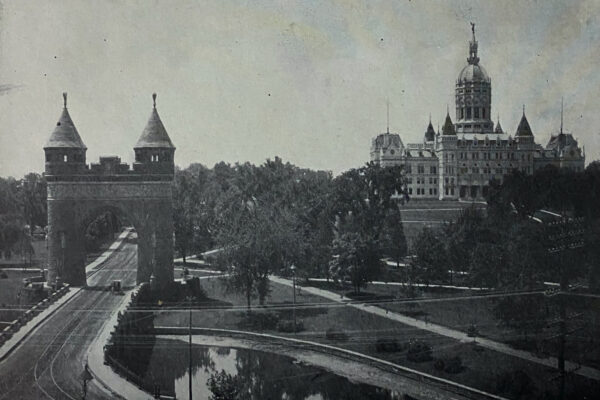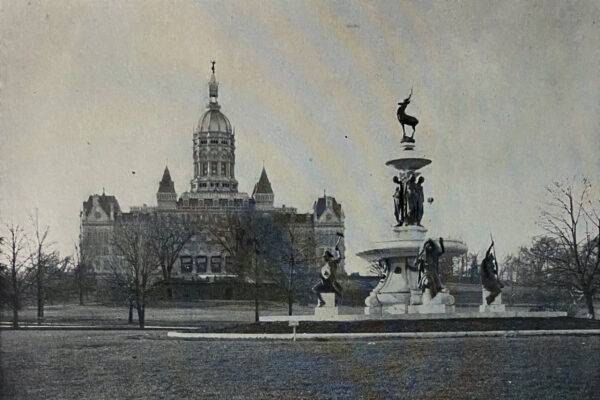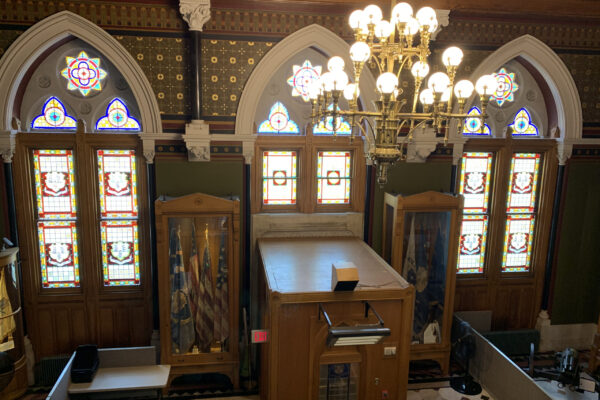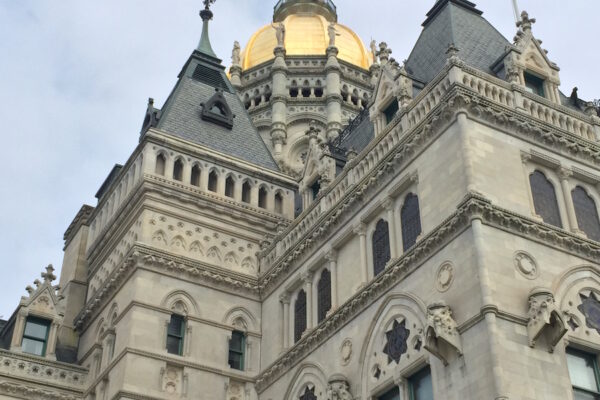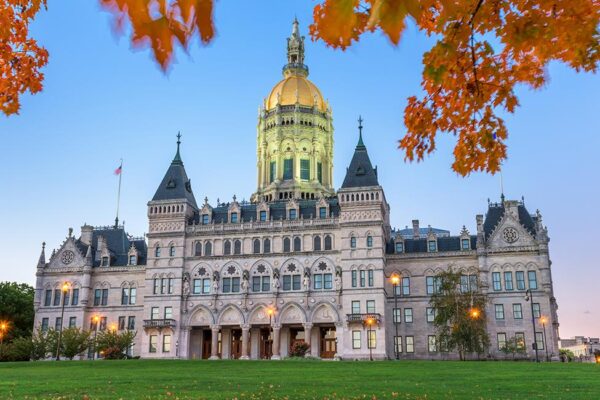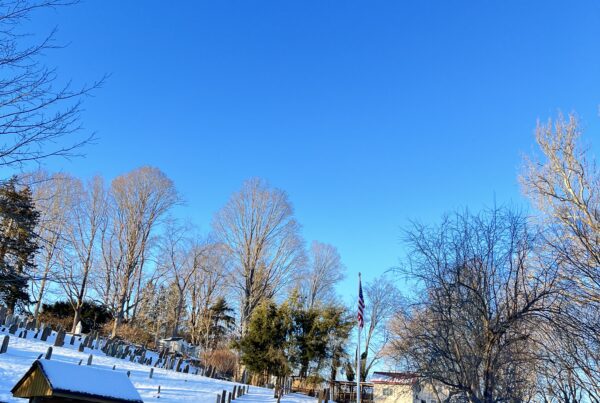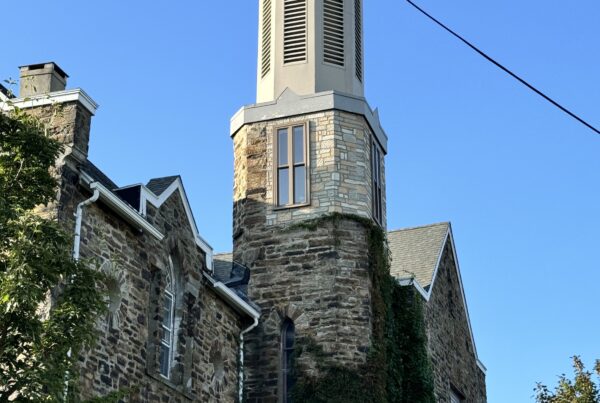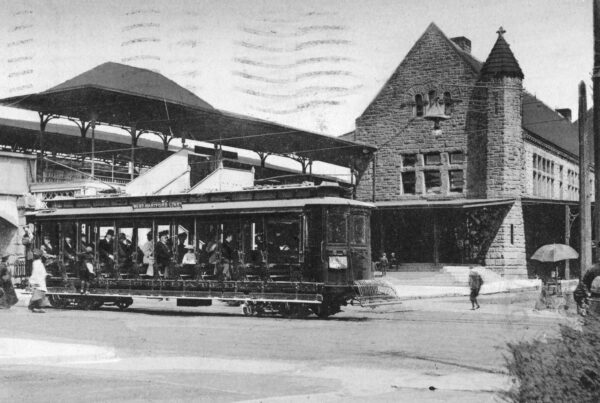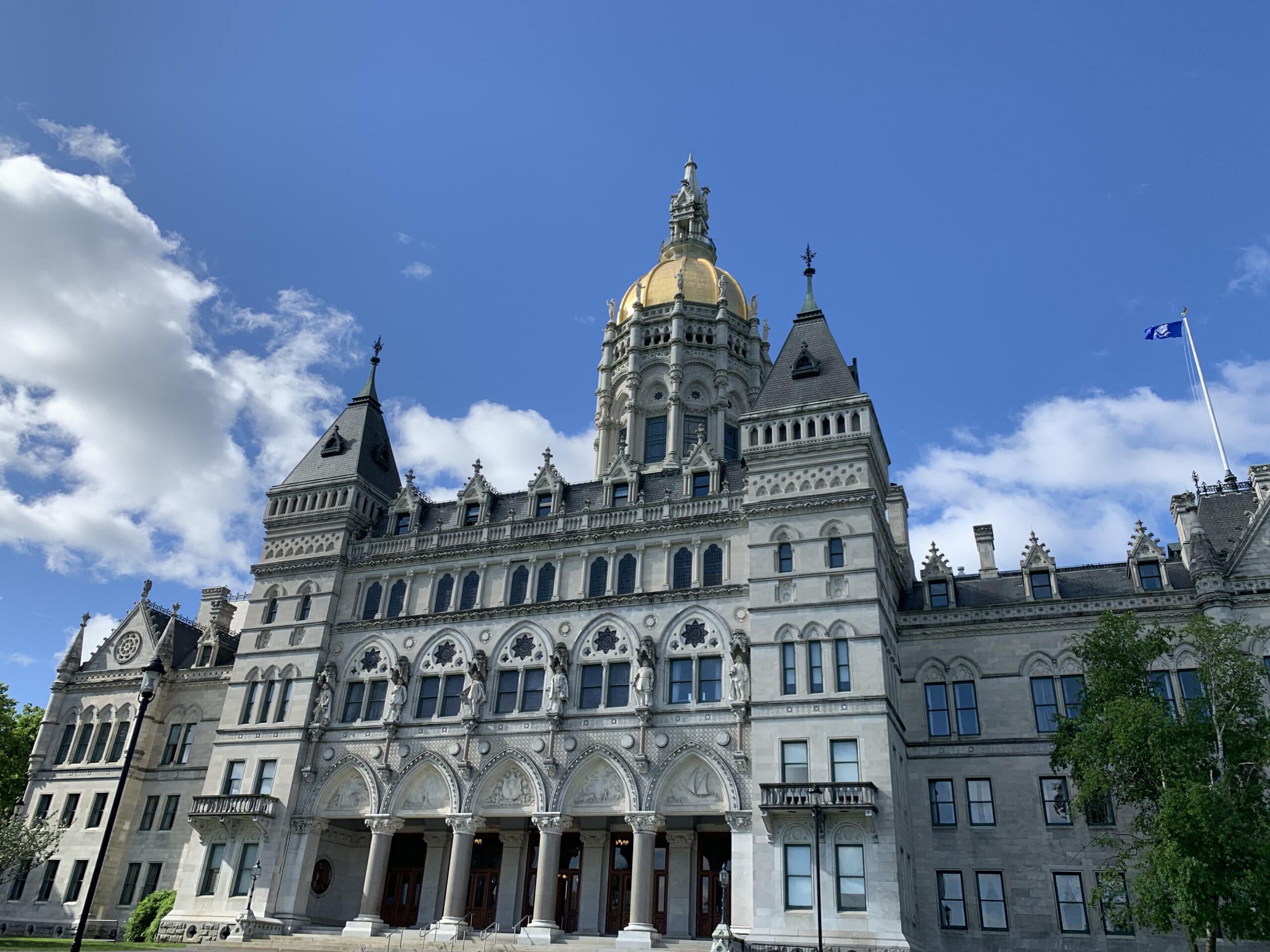
Connecticut State Capitol, Hartford, Connecticut:
“Overlooking Hartford’s 41-acre Bushnell Memorial Park, the Connecticut State Capitol first opened for the General Assembly in January, 1879. Constructed of New England marble and granite and crowned by a gold leaf dome, the Capitol was built at a cost of $2,532,524.43 and has an estimated replacement value of more than $200,000,000. In addition to housing the State Senate Chamber, Hall of the State House of Representatives and offices of the Governor, Lieutenant Governor, and Secretary of the State, the statehouse and surrounding grounds abound with memories and mementos of Connecticut’s early years. Connecticut State Capitol was officially declared a national historical landmark by the United States Department of Interior in 1972.” – from www.ct.gov
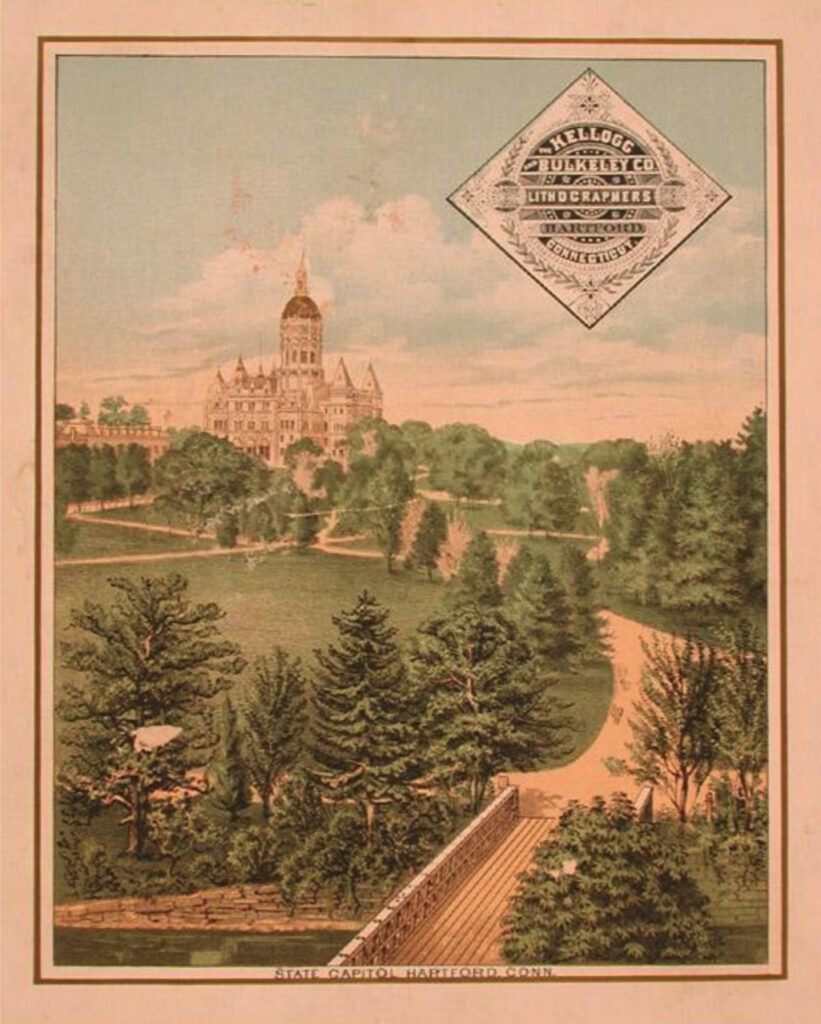
Connecticut State Capitol & Bushnell Park, Hartford, CT, 1878.
The Connecticut State Capitol, completed in 1880, is the fifth Capitol building used by the State of Connecticut since the American Revolution. Before then, Connecticut’s General Assembly (state legislature) alternated sites between Hartford and New Haven. The City of Hartford became the sole state capital of Connecticut in 1875.
Initial plans to build the Capitol building began in 1871, when the General Assembly established a special commission. The City of Hartford donated land adjacent to Bushnell Park (the original location of Trinity College known as Trinity Hill – a street to the east is called Trinity Street). The state legislature accepted and authorized a $1,000,000 project.
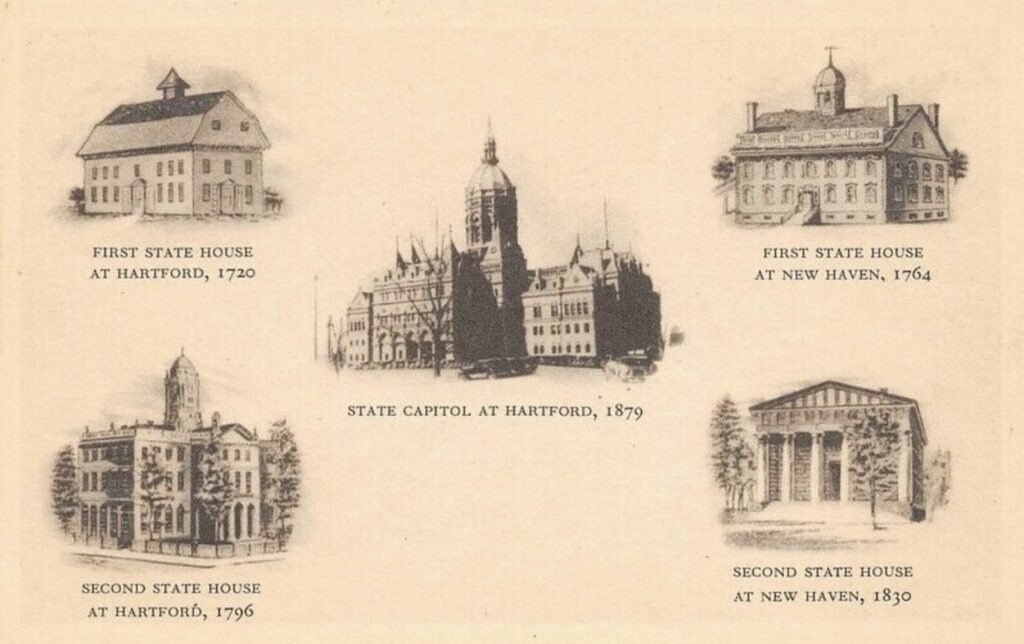
Connecticut State Capitol postcard, 1907.
Two contractors, James G. Batterson and Richard M. Upjohn vied to win the project. Upjohn won the bid, but Batterson, a stone purveyor, was also named as a contributing contractor. Throughout construction Batterson revised Upjohn’s plans to resemble his own plan. The central tower, for example, is Batterson’s design and his elaborations ended up more than doubling costs to over $2,500,000.
Upjohn described the building as “modern secular Gothic.” The New York Times noted that the new building was “a vast mass of white marble, this imposing structure, and in the dazzling sunshine of a New England summer noon sparkles like a fairy palace of frost-work.” Construction of the building was completed in 1878. It opened for a General Assembly session in January of 1879.
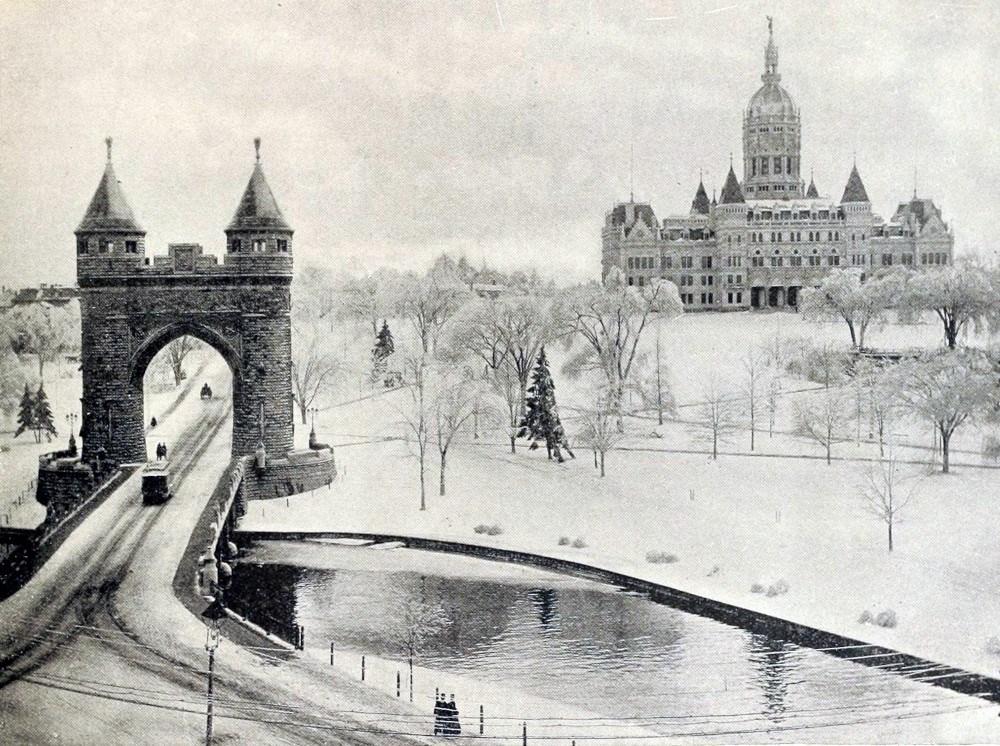
Soldiers and Sailors Memorial Arch & Connecticut State Capitol, c. 1895.
The exterior is made of marble from East Canaan, Connecticut, and of granite from Westerly, Rhode Island. Ornate façades display statuary, medallions and carved tympana. The statues recall famous historical figures, such as the Reverend Thomas Hooker (c. 1586-1647) the founder of Connecticut, Governor John Winthrop, Jr. (c. 1605-1676), Captain John Mason (c. 1600–1672) a controversial figure of the Pequot War, Roger Sherman (1721-1793), Governor Jonathan Trumbull (1710-1785), Noah Webster (1758-1843), General Joseph Hawley (1826-1905), Civil War Secretary of the Navy Gideon Welles (1802-1878) and United States Senator Orville Hitchcock Platt (1827-1905). There are 24 niches for sculpture (eight of which are still empty). The last statue added was that of Ella T. Grasso, the first female Governor of the State, who died in 1981 shortly after resigning from office.
View post on Instagram: https://www.instagram.com/reel/CXzSL34oIWL/
Discover more about the statuary at the State Capitol here: https://www.publicartct.org/artwork/capitol-sculpture-north-facade-early-colonial-connecticut-and-founding-fathers/

